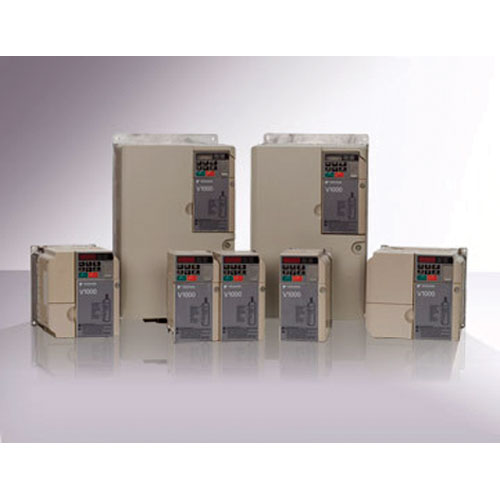Schedule a Call Back
Shift to green energy is a huge engineering opportunity for India
 Interviews
Interviews- Feb 17,23

Danfoss - a world leader on decarbonisation technologies within mobile hydraulics, cooling & refrigeration, electrification, and drives - has been witnessing double-digit growth in India. With the country experiencing unprecedented growth in every sector, there will be a surge in energy consumption over the next two decades. This is where Danfoss is relevant as customers sees us as their preferred sustainability partner, says Ravichandran Purushothaman, President, Danfoss India. In this interview with Rakesh Rao, he elaborates on how Danfoss is supporting India's growth engine with its energy-efficient systems and solutions.
Recently, Danfoss announced plans to double its India business by 2025. Could you please elaborate upon the roadmap (action plan) for achieving this goal?
Danfoss India is in the 25th year of its establishment in India. Our journey has been extraordinary so far and 2022 topline makes us confident about our future growth. We are regarded as a trusted and reliable partner serving energy efficiency needs of businesses across sectors with our technology and expertise.
On our future roadmap, to achieve growth, we aim to be present in 80 cities of India from current 56 cities in the next two years. Danfoss India will enhance the localisation of the company’s products which are currently over 50 per cent though it varies within the product range. The third area will be to tap the new business segments that are emerging out of the decarbonization mission. As India starts to put a lot more focus on PLI schemes, infrastructure, healthcare, metro projects, high-speed trains, food supply chain, data centres, etc. there will be lot of new hotspots for strong growth.
What are your priorities for Danfoss India at present? How are you gearing to tap the new opportunities in India?
Sustainability is at the core of everything we do. Our priority is to be a preferred decarbonization partner to our customers to enable decarbonization in an intelligent, cost optimal manner and ensure carbon neutrality in our own operations. We want to position ourselves for further growth and greater impact.
We will integrate our new ESG ambition into everything we do, from our operations to the way we engineer solutions for our customers, to the way we attract people to lead the green transition. We are intentionally integrating equity and inclusion across the entire employee experience. Danfoss believes our diverse workforce is the foundation to our success.
In the last 2 years, Danfoss has invested approximately $300 million in India and if we sustain the current growth momentum of double-digit growth, will see more investments coming from the Danfoss group. Globally also, Danfoss has beefed up R&D and building capabilities and capacities along with taking over companies that helped strengthen our core businesses. To tap the new opportunities, we have hired over 1,400 people in the technical domain during and after the pandemic to raise the headcount to around 3400. We are geared up to take a quantum leap, as far as Indian operations goes.
How are massive capital investments in infrastructure, power, railways/metros, electric vehicles, renewable energy, modernisation of industries, etc leading to increase in demand for Danfoss’ products & solutions?
Two-thirds of the country is yet to be built. By 2030, 40 per cent of the Indians will be residing with a need for robust and sustainable infrastructure. The nation of 1.3 Billion people needs a food security as 25 per cent of our farm produce is lost annually. 49 metropolitan clusters are expected to drive 77 per cent of India’s incremental GDP till 2025. As India marches ahead, from airports, high speed rails and metros, infra projects & complex data centers to booming industries, every facet of the country is transforming. This calls for technology and innovation that can help India do more with less.
Danfoss' products and solutions as driving forces of a growth-driven economy, address technological gaps in urbanisation, food security, electrification, digitalization, and climate change. These are the areas where our solutions can be used. There will be a surge in energy consumption over the next two decades as India experiences unprecedented growth in every sector. This is where we are relevant. Our customers across the value chain increasingly see Danfoss as a preferred sustainability partner. We contribute to a brighter future by integrating energy-efficient systems.
What are your views on the present status of the Indian manufacturing industry?
India has emerged as a globally competitive manufacturing hub and the sector represents one of the biggest opportunities to spur economic growth and job creation. The manufacturing value chain is well poised to tap into market opportunities- export growth (export goods worth $ 1 trillion by 2030), import localization, domestic demand, and contract manufacturing. This high-potential value chain can more than double its manufacturing GDP in a few years. The logistics costs are higher in India than our competitor countries like Taiwan, Thailand, Vietnam, Indonesia, and China. The PLI scheme will help us overcome this lag. These countries have an ecosystem of supply chain and have a very robust infrastructure.
What factors will propel the growth of the Indian manufacturing sector in the coming years?
The world is looking at China Plus One strategy sounding impending change in the global order. The PLI launched in March 2020 and then extended across sectors came at the right time with the thought of promotion of exports and attracting the MNCs to set up establishments. The scheme provided the scope for volumes or scale creating a huge opportunity for exports to grow. For this kind of scale, you need local value-addition. So, in a way PLI paved the way for creating a robust supply chain in India. Now state governments are coming up with their own plans. If these are packaged together, there is a greater opportunity. As the industry scales up, components will become cheaper. This will help spread the manufacturing base within India and create multiple supply chains.
What are the key challenges in the growth of India's manufacturing sector?
Major challenge is that projections of manufacturing and economic growth, energy use and emissions per energy unit have put India on a path of continuously increasing greenhouse gas (GHG) emissions. India is one of the world's biggest CO? emitters, behind only China and the United States. Electricity sector accounts for India’s largest share of greenhouse gas emissions at roughly 37 per cent. It is pertinent now for India to mitigate climate change as fast as possible to counter the large negative impacts on GDP due to the consequences of global warming.
To achieve the goal of improvement in energy intensity per unit of GDP, energy efficiency adoption will be a big key for India’s overall reduction of GHG emissions. A shift to green energy is a huge economic opportunity. Fortunately for India, the government has shown a strong resolve and pledged to cut greenhouse gas emissions by 45 per cent from 2010 by 2030 to achieve net-zero emissions by 2070.
What is your “Vision 2025” for the Indian Manufacturing Sector?
The government of India is aiming strong growth to achieve its aim of a $5 trillion economy by 2025. Its goals include increasing the manufacturing share of GDP to 25 per cent by 2025. India is well on its way to become most sought-after manufacturing destination in the world and has the potential to export goods worth $ 1 trillion by 2030.
India is rapidly developing and industrialising, a process that is inherently emissions intensive. The path to NZE (Net Zero Emission) is being addressed through the technologies, practices, and behaviors. By 2025, the actions to cut energy intensity, increasing the share of renewables and curtailing emissions will get stabilised as per the Panchamrit mission. Indian manufacturing will witness- mass deployment of clean technologies and energies, support for energy-efficient and low-carbon choices.
The effective use of time, energy and resources ensure sustainability in the business operations. The technology will evolve by 2025 and there will be a deployment of AI, ML, Cloud Computing, The IoT, 5G and Metaverse which will boost output and efficiency in the manufacturing sector. With impetus on developing industrial corridors, metros, new airports, high-speed trains and smart cities, India will witness unprecedented growth in manufacturing sector in this decade from 2025.
With sustainability becoming important for global businesses, what kind of challenges & opportunities it presents to the Indian engineering industry?
Sustainability is an investment area where organisations can realise genuine returns and tap the future opportunities that gives organisations a competitive edge. Consumers, particularly millennials, increasingly say they want brands that embrace purpose and sustainability. Yet there is a frustrating paradox at the heart of green business which is a challenge. According to a recent survey, 65 per cent of respondents said they want to buy purpose-driven brands that promote sustainability, but only about 26 per cent do so.
Considering country’s carbon neutrality commitment, Danfoss with CII – Godrej GBC jointly published a Research Report recently “Decarbonization of Indian Industrial Sector” that has studied select hard to abate sectors and suggested few best possible techniques like energy efficiency, renewables and clean technologies, circular economy, biomass, hydrogen, and other zero carbon fuels along with CCU (Carbon Capture Utilization and Storage) to reduce the industry’s emissions through low carbon levers. India’s industrial sector would need to employ these pathbreaking techniques to mitigate greenhouse gas emissions and ensure deep digital decarbonisation. Many of the futuristic technologies like hydrogen, CCUs, fuel cells etc. are still in their nascent stages with huge cost implications. On one hand these technologies require a huge push on the policy front, but the industry leaders also need to come forward and demonstrate its commitment towards adoption of these technologies.
The industry and transport sectors generate the largest emissions. Developing new lower-carbon choices industrial production processes and mobility solutions will not just reduce domestic emissions but could also position India as a global market leader in these areas. A shift towards green energy is a huge engineering opportunity for India.
Related Stories

Energy Efficiency as a Strategic Priority for Indian Manufacturing
India’s manufacturing growth is accelerating, but rising energy demand makes efficiency a strategic necessity for cost control, competitiveness, and sustainable industrial expansion.
Read more
EXCON 2025 Sets New Benchmarks for India’s Construction Equipment Sector
EXCON 2025 set new benchmarks in scale and participation, reinforcing India’s position as the world’s third-largest construction equipment market and showcasing the sector’s readiness for sust..
Read more
Wipro Hydraulics Marks 50 Years with Global Expansion and Innovations at EXCON 2025
Wipro Hydraulics celebrates 50 years, showcasing global growth, advanced technologies, and new innovations at EXCON 2025.
Read moreRelated Products

Ph Fwd/ Rev Motor Protection Ssrs
Insys Electrical & Controls offers a wide range of PH FWD/ REV motor protection SSRs.

Commutator Motors
J D Automation provides a range of commutator motors, which are also
known as permanent magnet DC motors.

Compact Speed Vector Drives
Confident Automation offers compact speed vector drives.















